
Sir Thomas Henry Hall Caine, usually known as Hall Caine, was a British novelist, dramatist, short story writer, poet and critic of the late 19th and early 20th century. Caine's popularity during his lifetime was unprecedented. He wrote 15 novels on subjects of adultery, divorce, domestic violence, illegitimacy, infanticide, religious bigotry and women's rights, became an international literary celebrity, and sold a total of ten million books. Caine was the most highly paid novelist of his day. The Eternal City is the first novel to have sold over a million copies worldwide. In addition to his books, Caine is the author of more than a dozen plays and was one of the most commercially successful dramatists of his time; many were West End and Broadway productions. Caine adapted seven of his novels for the stage. He collaborated with leading actors and managers, including Wilson Barrett, Viola Allen, Herbert Beerbohm Tree, Louis Napoleon Parker, Mrs Patrick Campbell, George Alexander, and Arthur Collins. Most of Caine's novels were adapted into silent black and white films. A. E. Coleby's 1923 18,454 feet, nineteen-reel film The Prodigal Son became the longest commercially made British film. Alfred Hitchcock's 1929 film The Manxman, is Hitchcock's last silent film.
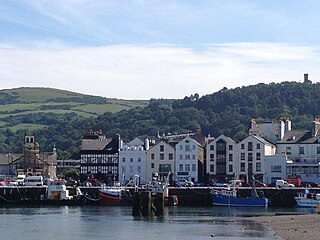
Ramsey is a coastal town in the north of the Isle of Man. It is the second largest town on the Island after Douglas. Its population is 8,288 according to the 2021 Census. It has one of the biggest harbours on the Island, and has a prominent derelict pier, called the Queen's Pier. It was formerly one of the main points of communication with Scotland. Ramsey has also been a route for several invasions by the Vikings and Scots.

British Airways Ltd was a British airline company operating in Europe in the period 1935–1939. It was formed in 1935 by the merger of Spartan Air Lines Ltd, United Airways Ltd, and Hillman's Airways. Its corporate emblem was a winged lion.

The 11th Milestone, Isle of Man is situated adjacent to the 13th Milestone on the primary A3 Castletown to Ramsey Road which forms the boundary between the parishes of Kirk German and Kirk Michael in the Isle of Man.

Royal Air Force Jurby, or more simply RAF Jurby, is a former Royal Air Force station built in the north west of the Isle of Man. It was opened in 1939 on 400 acres (1.6 km2) of land acquired by the Air Ministry in 1937, under the control of No. 29 Group, RAF. During the Second World War the station was used for training as No. 5 Armament Training Station, No. 5 Air Observer School, No. 5 Bombing & Gunnery School and the No. 5 Air Navigation & Bombing School. In addition RAF Jurby also played host to a variety of operational squadrons.

Hall Caine Airport, also referred to as Close Lake Airfield, was an airfield on the Isle of Man located near the town of Ramsey. It was named after the author Sir Thomas Henry Hall Caine CH, KBE by his sons Gordon Hall Caine and Derwent Hall Caine, who initiated the project, and was the first airport in the British Isles to be named after a person.
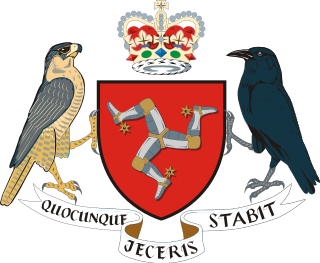
Sir Joseph Davidson Qualtrough CBE JP SHK was Speaker of the House of Keys from 1937 to 1960.
The Hendy 281 Hobo was a British single-seat light monoplane designed by Basil B. Henderson and built by the Hendy Aircraft Company at Shoreham Airport in 1929. Only one aircraft was built, registered G-AAIG, and first flown in October 1929 by Edgar Percival.
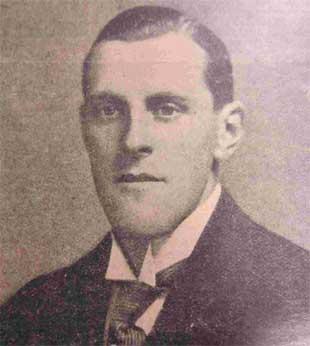
Alec Ewart Glassey was a British Liberal politician. He was Member of Parliament for East Dorset from 1929 to 1931.

Sir Derwent Hall Caine, 1st Baronet was a British actor, publisher and Labour then National Labour politician.
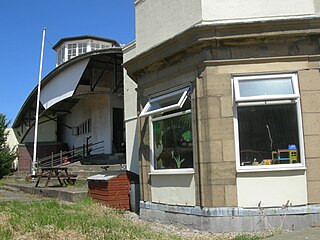
Stanley Park Aerodrome was an airfield located in the Stanley Park area of Blackpool, Lancashire, England. It was also known as Blackpool Municipal Airport, and was in use for civil and military flying from 1929 until closure of the airfield in 1947. The site is now used by Blackpool Zoo.

Ballaugh Bridge is located on the primary A3 Castletown to Ramsey road and adjacent to the road junctions with the A10 Ballaugh to Ramsey coast road and the tertiary C37 Ballaugh Glen Road in the parish of Ballaugh in the Isle of Man.

The Manxman is a novel by Hall Caine, first appearing as a serial in The Queen, The Lady's Newspaper and Court Chronicle between January and July 1894. Published as one volume in August 1894 by Heinemann, The Manxman ended the system of three-volume novels. A highly popular novel of its period, it was set in the Isle of Man and concerned a romantic triangle. The novel has as its central themes, the mounting consequences of sin and the saving grace of simple human goodness.
Oscar Garden was a Scottish-born Antipodean aviator and horticulturist.

Josephine Kermode (1852–1937) was a Manx poet and playwright better known by the pen name "Cushag".

The Bondman is an 1890 best-selling novel by Hall Caine set in the Isle of Man and Iceland. It was the first novel to be released by the newly established Heinemann publishing company. It was a phenomenal success and was later adapted into a successful play and two silent films.
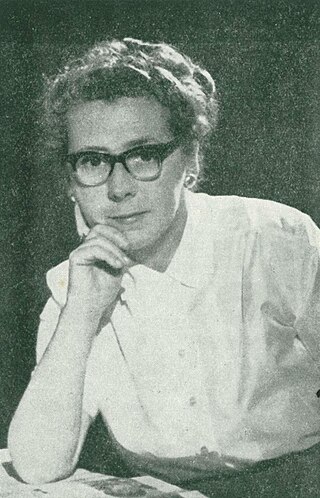
Kathleen Faragher (1904–1974) was the most significant and prolific Manx dialect writer of the mid twentieth century. She is best known for her poems first published in the Ramsey Courier and collected into five books published between 1955 and 1967. She was also a prolific short story writer and playwright. Her work is renowned for its humour born of a keen observation of Manx characters, and for its evocative portrayal of the Isle of Man and its people.
George Quarrie was a Manx poet active in the 1880s–1910s, best known for his poem, The Melliah.
Juan Noa was the pen-name of John Henry Cleator, a Manx dialect poet and playwright active from the 1920s to the 1960s in the Isle of Man.

Arthur Binns Crookall JP, MLC, CP, was a philanthropist, Mayor of the Borough of Douglas, a member of both branches of Tynwald, Chairman of the Isle of Man Steam Packet Company and Chairman of the Isle of Man Railway Company who at his death was one of the wealthiest people on the Isle of Man.

















